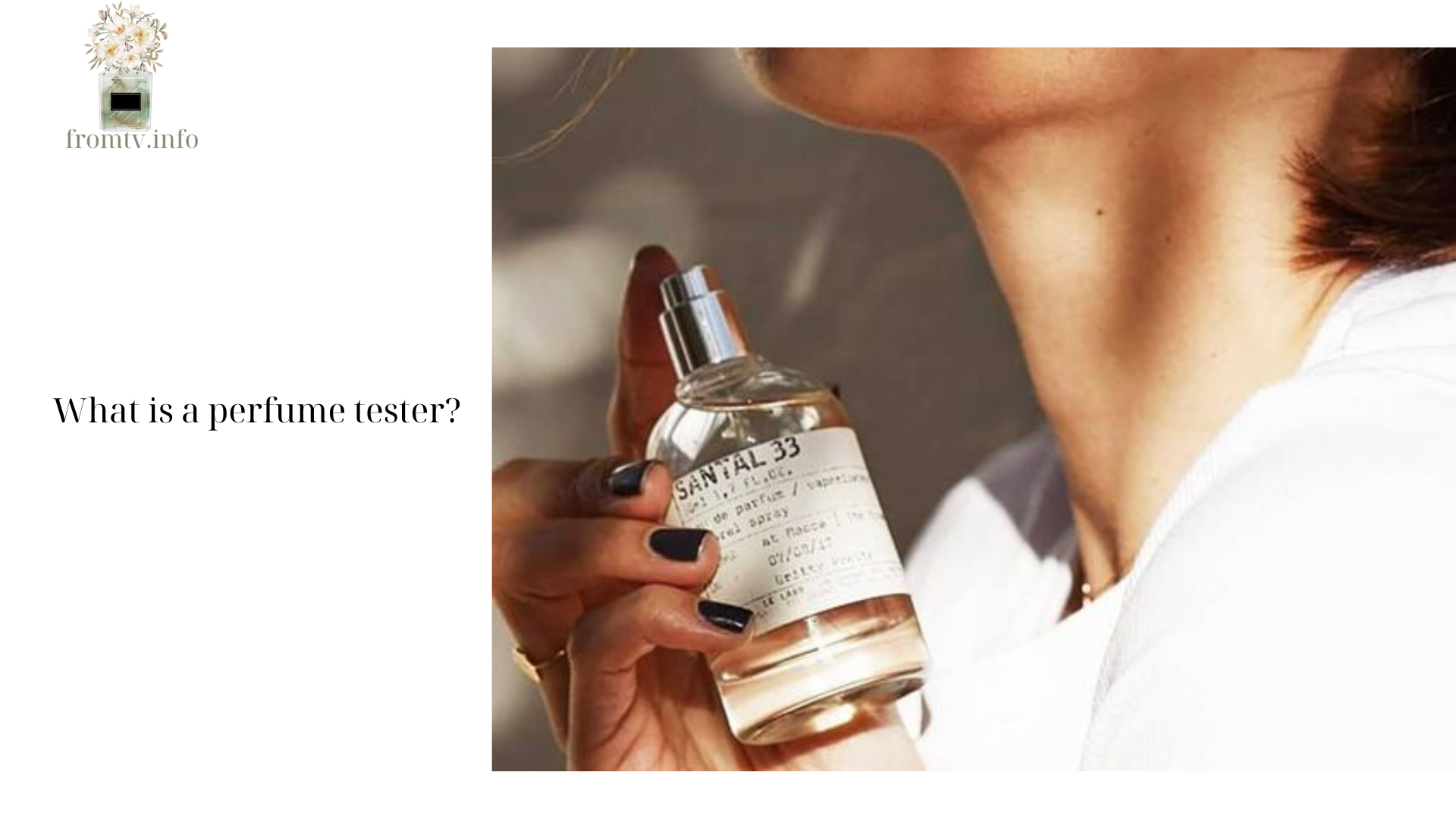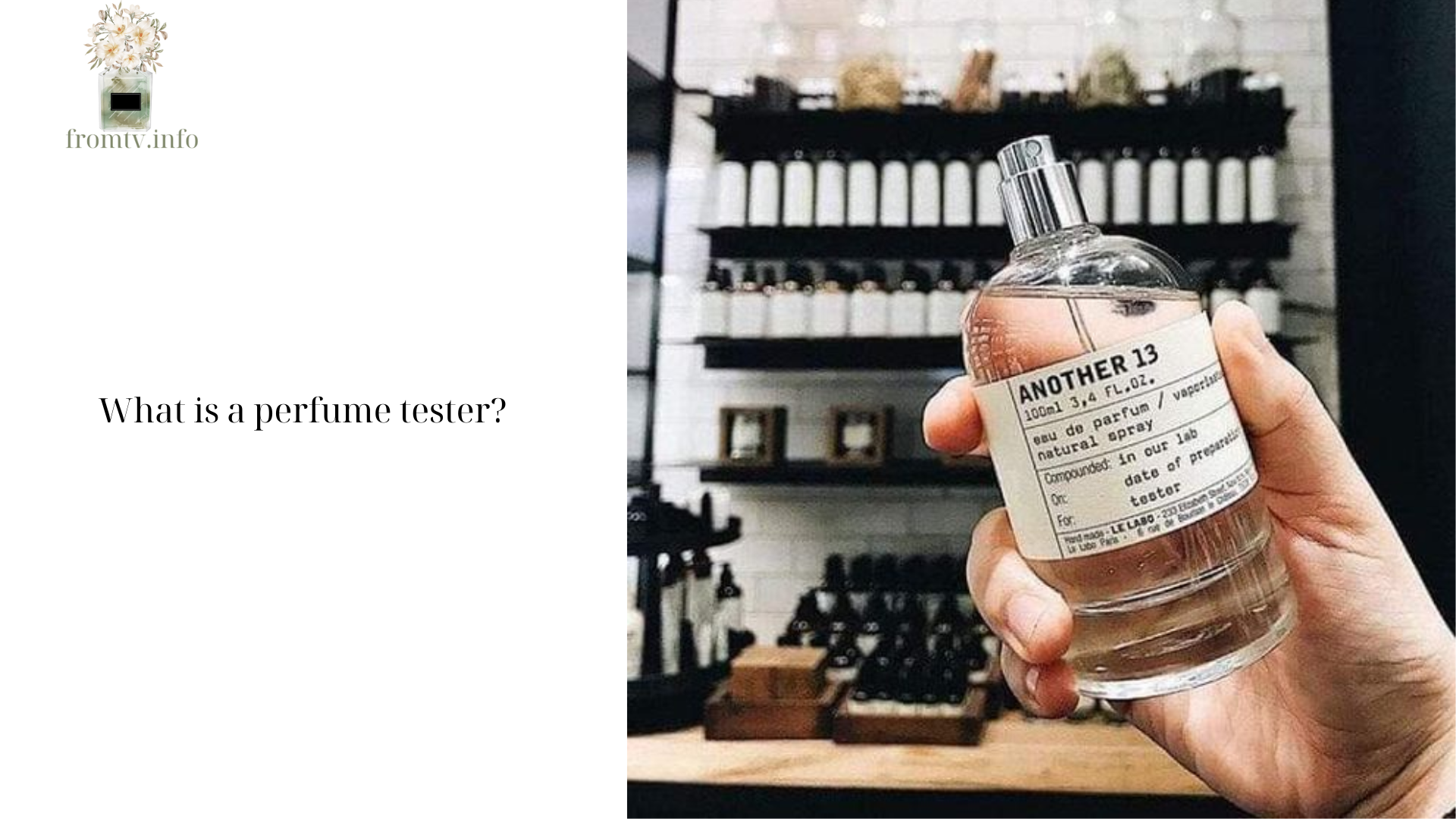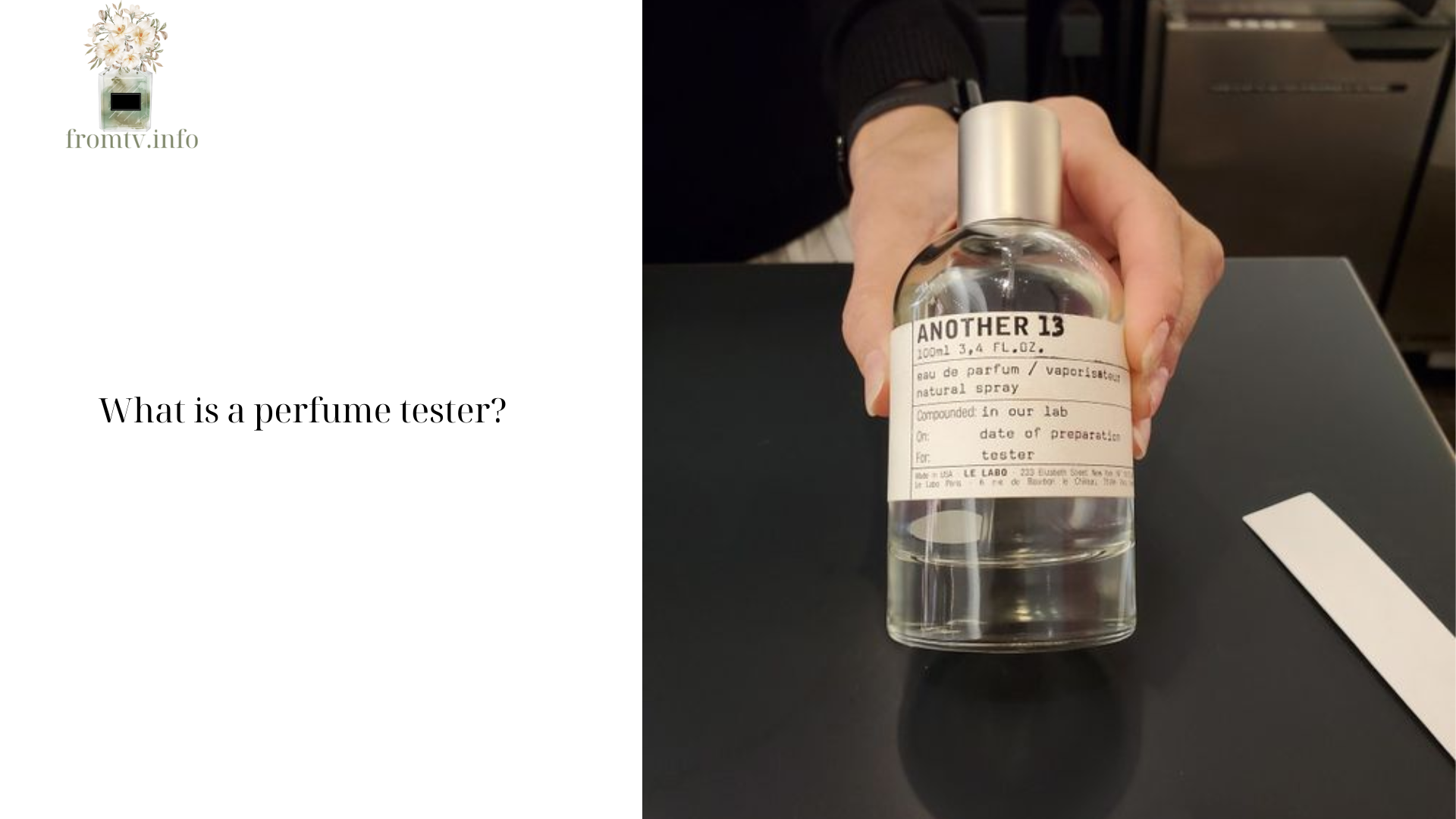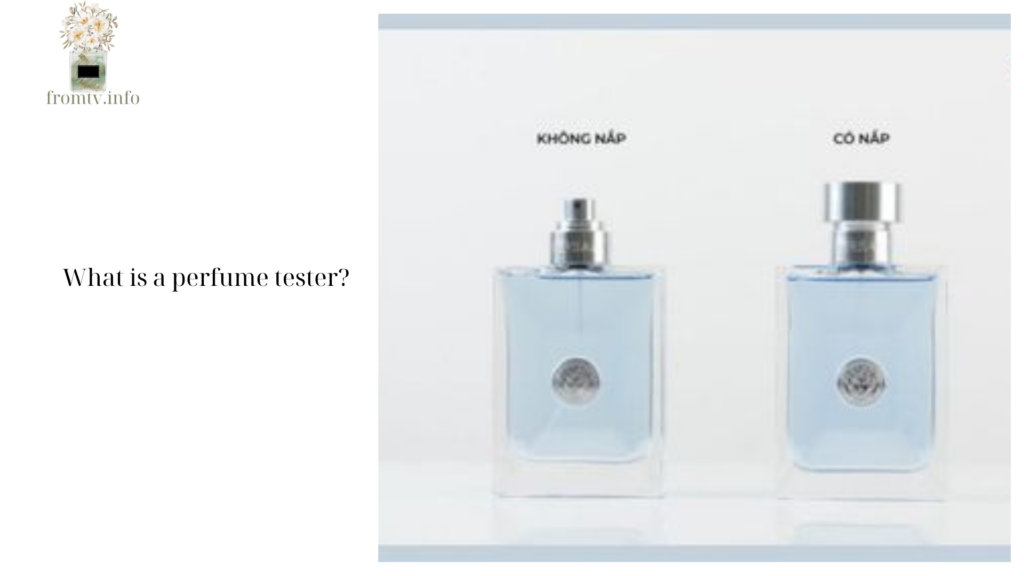A perfume tester is a version of a perfume that is often used for promotional purposes in retail settings to allow customers to sample the fragrance before making a purchase so here Fromtv will explore the key details about perfume testers:
What is a perfume tester? Let’s Delve Into the Definition

1. Purpose
The primary purpose of a perfume tester is to provide customers with a way to experience the fragrance without opening a new, sealed product. This helps them decide whether they like the scent enough to buy it.
2. Packaging
- Simplified Packaging: Testers typically come in simpler packaging compared to the retail versions. They may be housed in plain, white, or cardboard boxes without the decorative elements and branding found on full-priced products.
- Bottle Design: The bottle design and size are usually the same as the retail version, though some testers might come without a cap.
3. Cost
Testers are often sold at a lower price than the regular retail versions. This is because they are not intended for direct sale and come in less elaborate packaging.
4. Contents
- Same Quality: The fragrance inside a tester bottle is identical in quality and concentration to the retail version. There is no difference in the scent or the ingredients used.
- Volume: Testers generally contain the same amount of perfume as the regular retail bottles.
5. Usage
- Retail Displays: Testers are commonly found on display counters in perfume shops and department stores for customers to spray and test the scent.
- Sales and Promotions: Sometimes, retailers sell testers at a discount, especially if they have an excess supply or are clearing out inventory.
Advantages of Buying Perfume Testers

1. Cost-Effective
Since testers are usually cheaper than the standard versions, they offer a budget-friendly option for customers who want to enjoy high-quality fragrances without paying full price.
2. Same Fragrance Quality
Testers contain the same perfume as the retail product, ensuring you get the authentic fragrance experience without any compromise on quality.
3. Great for Regular Use
Testers are ideal for everyday use, especially if you’re not concerned about the fancy packaging and just want the fragrance.
Disadvantages of Buying Perfume Testers
1. Packaging
The plain or minimal packaging may not be as aesthetically pleasing as the retail version. This might be a drawback if you prefer your perfume bottles to look stylish on your vanity or if you’re buying the perfume as a gift.
2. Availability
Testers are not always available for sale and may be harder to find compared to regular retail bottles. They are primarily intended for in-store testing rather than for purchase.
3. Lack of Cap
Some testers come without a cap, which might be inconvenient for travel or if you prefer a capped bottle.

Tips for Buying Perfume Testers
- Reputable Sellers: Purchase from reputable retailers or sellers to ensure you are getting an authentic tester. Be cautious of counterfeit products.
- Check Contents: Ensure the tester has not been excessively used if you’re buying from a second-hand source.
- Confirm Packaging: Understand that the packaging will be different from the retail version, but the fragrance will be the same.
The History of Perfume Testers
Early Days of Perfume Sampling
The concept of perfume sampling dates back centuries. In ancient times, merchants and traders would often offer small samples of their goods, including perfumes, to potential buyers. This allowed customers to experience the fragrance and decide if they wanted to purchase a larger quantity.
Evolution in the Modern Era
In the 20th century, the perfume industry began to formalize the practice of offering testers. As department stores and boutique shops became more common, so did the need for a standardized method of allowing customers to sample fragrances. Testers became an essential part of the marketing strategy for perfume brands, helping to drive sales by allowing customers to make informed decisions.
The Science Behind Perfume Longevity
Perfume Composition
Perfumes are composed of various aromatic compounds, solvents, and fixatives. These components work together to create a fragrance that evolves over time. The longevity of a perfume depends on several factors, including the concentration of aromatic compounds and the quality of the ingredients used.
- Top Notes: These are the initial scents you smell when you first apply the perfume. They are usually light and volatile, lasting only a few minutes to an hour.
- Heart (Middle) Notes: These notes emerge as the top notes fade and can last several hours. They form the core of the fragrance.
- Base Notes: These are the longest-lasting notes, providing depth and longevity to the fragrance. They can last several hours to a whole day.
Factors Affecting Longevity
- Concentration: Perfumes come in various concentrations, such as Eau de Toilette (EDT), Eau de Parfum (EDP), and Parfum. Higher concentrations like Parfum have more aromatic compounds and thus last longer.
- Skin Type: Oily skin tends to hold fragrances longer than dry skin. Moisturized skin can also enhance the longevity of a perfume.
- Application Area: Applying perfume to pulse points (where the blood flow is closer to the skin’s surface) helps to amplify and prolong the scent.
- Environmental Factors: Temperature and humidity can affect how a perfume develops and how long it lasts. Heat can intensify the fragrance, while cold can suppress it.
Conclusion
Perfume testers provide an excellent opportunity to enjoy luxury fragrances at a reduced cost. Whether you’re exploring new scents or looking to save money on a favorite perfume, testers offer a practical solution. Just remember to buy from trusted sources to ensure authenticity and quality.

